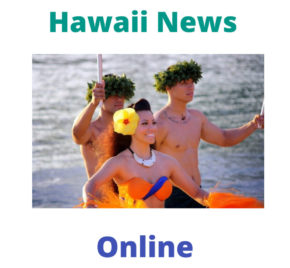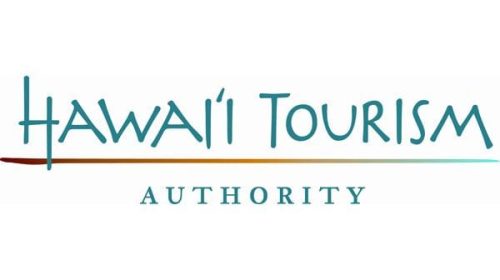Frequently asked questions answered about Hawaii volcano and earthquake recovery
The Federal Assistance and Disaster Recovery Centers answer frequently asked questions about Hawaii volcano and earthquake help.
Q: Does it usually take more than two months after a disaster to receive additional FEMA assistance?
A disaster declaration was approved on May 8, 2018 for Public Assistance, which provides reimbursement to state and local agencies for repairs to damaged public infrastructure and costs incurred for responding to the disaster. At that time, the damage and impacts to individuals did not exceed the capabilities of the state and local resources. Since then, the state provided additional supporting documentation to FEMA in June and as a result, the Individual Assistance program was approved and added to the existing disaster declaration on June 27, 2018.
Q: Who should apply for disaster assistance?
Homeowners, renters, private nonprofits and businesses in Kaua`i County and the City and County of Honolulu who sustained damage or losses to their primary homes, vehicles or personal property as a result of the severe storms, flooding, landslides, and mudslides that occurred April 13-April 16 can apply for disaster assistance.
The deadline to apply for FEMA assistance is August 27, 2018.
Homeowners, renters, private nonprofits and business owners (including landlords) may also be eligible for low-interest disaster loans from the U.S. Small Business Administration for disaster damaged or destroyed property. The SBA also provides Economic Injury (working capital) disaster loans to businesses and private nonprofits to help meet financial obligations that cannot be met as a direct result of the disaster.
Many homeowners have already begun the recovery process and have cleaned up after the storm. Please take photos of any damage and keep receipts of any repairs done to your home. Be sure to contact your insurance company to file a claim and find out what may be eligible under your policy. By law, FEMA cannot duplicate benefits from insurance or another agency.
Verification of damages to personal property is also required. If your personal property is not available for inspection then a technician statement, pictures, receipts may help with verifying damages
Q: How do I apply for disaster assistance?
Eligible homeowners, renters, private nonprofits, and business owners can apply in the following ways:
· At the Disaster Recovery Center
The DRC locations are:
Kaua‘i
Hanalei Elementary School Cafeteria; 5-5415 Kuhio Hwy, Hanalei, HI
The City and County of Honolulu
Aina Haina Elementary; 801 W. Hind Drive, Honolulu, HI
The DRCs in Hanalei and Honolulu are open weekdays from 9 a.m. to 6 p.m. and Saturdays from 9 a.m. to 4 p.m. The DRCs are closed on Sundays. Both DRCs are scheduled to cease operations close of business Saturday, July 28, 2018.
· Online at DisasterAssistance.gov
· By Phone 800-621-3362. Operators are available to help in many languages.
– Applicants who use 711 or Video Relay Service may also call 800-621-3362. Persons who are deaf, hard of hearing or have a speech disability and use a TTY may call 800-462-7585.
– The toll-free numbers are open from 7 a.m. to 11 p.m., seven days a week.
To apply for SBA low-interest disaster loans, Applicants can visit the disaster recovery center for one-on-one assistance or apply online using SBA’s secure website at https://disasterloan.sba.gov/ela.
In addition, applicants can get more information on SBA disaster assistance by calling SBA’s Customer Service Center at (800) 659-2955, by visiting www.sba.gov/disaster, or by emailing [email protected]. Individuals who are deaf or hard of hearing may call (800) 877-8339.
Paper applications may be requested, and completed paper applications should be mailed to U.S. Small Business Administration, Processing and Disbursement Center, 14925 Kingsport Road, Fort Worth, TX 76155.
Disaster Recovery Centers are staffed with representatives from FEMA and the U.S. Small Business Administration. Survivors can meet one-on-one with specialists in disaster recovery.
Q: Why should I visit a DRC?
At a DRC, applicants can:
· Find answers to questions about the application process or get help making the initial registration;
· Check the status of an application, update personal contact information, or give insurance information or other required documents need to complete your file to FEMA assistance specialists;
· Find out what to do if your application is found ineligible for FEMA assistance;
· Learn the information FEMA needs to process an individual’s application;
· Speak to U.S. Small Business Administration customer service representatives about low-interest disaster loans for businesses, private nonprofits, homeowners and renters;
· Get help completing and submitting SBA disaster loan applications.
All centers are accessible and equipped with equipment to accommodate disaster survivors who have access and/or functional needs. If an American Sign Language Interpreter is needed please see the DRC Manager and we can arrange to have someone available.
Federal Disaster Assistance ASL video (Applying for FEMA disaster assistance) https://youtu.be/-xaBLlNUYM8
Q: What type of documents do I need to bring to the DRC?
Applicants will be asked for the following information:
• Social Security number
• Address of the damaged primary residence
• Description of the damage
• Information about insurance coverage
• A current contact telephone number
• An address where they can receive mail
• Bank account and routing numbers for direct deposit of funds
Q: What types of assistance are available?
Disaster assistance may include grants to help pay for temporary housing, essential home repairs, destroyed home replacement, uninsured and underinsured personal property losses; medical, dental and funeral expenses caused by the disaster, and other serious disaster-related expenses, including childcare.
FEMA programs cannot duplicate benefits from insurance or another agency. Financial assistance is limited and may not return your home to pre-disaster condition.
The U.S. Small Business Administration (SBA) is the federal government’s primary source of money for the long-term rebuilding of disaster-damaged private property. SBA helps businesses of all sizes, private non-profit organizations, homeowners and renters fund repairs or rebuilding efforts and cover the cost of replacing lost or disaster-damaged personal property. These disaster loans cover losses not fully compensated by insurance or other recoveries and do not duplicate benefits of other agencies or organizations.
Q: When the Disaster Recovery Centers close can I still apply for FEMA?
Yes, Individuals and homeowners affected by the disaster have until Saturday, July 28, 2018 to apply for federal disaster assistance from April’s severe storms, flooding, mudslides, and landslides. You can register online or call FEMA’s toll-free number from 7 a.m. to 11 p.m., seven days a week.
Q: I registered with the City, County and Voluntary agencies after the storms, am I registered with FEMA?
No. The Individual Assistance program was approved and added to the existing disaster declaration on June 27, 2018. If you registered with another agency prior to June 27th, then you are not registered with FEMA. You can register online, over the phone, or visit one of the DRC locations.
Q: I have registered for assistance. What happens next?
If your home or its contents are damaged or destroyed and you are uninsured or underinsured, a FEMA inspector may contact you within 10 days after you apply to schedule a time to meet with you to verify damages. All inspectors carry photo ID that shows they are affiliated with the U.S. government.
If your home was destroyed or is not accessible, FEMA will work with you to examine your home in order to assess the damage.
About 10 days after the inspection FEMA will determine if you qualify for assistance. If you qualify, FEMA will send you a check by mail or deposit it in your bank account. FEMA will also send you a letter describing how you are to use the funds.
Other agencies may require additional verifications for their disaster assistance programs.
Q: What will FEMA accept as proof that I occupied my home?
FEMA accepts many documents as proof of occupancy, including a utility or credit card bill or other first class mail sent to you and showing the damaged property as your address, a pay stub, or a current driver’s license.
Q: What do I do with the SBA loan application?
Submitting an SBA disaster assistance loan application is a vital step in the recovery process. Survivors should complete and submit the application to be considered for a low-interest loan, as well as other types of federal assistance. These loans are the major source of recovery funding.
There is no obligation to accept a loan, if one is offered. If SBA finds that you do not qualify for a disaster loan, you may be referred back to FEMA for possible other assistance.
If you were referred by FEMA to the SBA, you must complete the SBA application process, even if declined by the SBA, in order to be referred back to FEMA for any other possible assistance.
Q: Do I have to repay the money from FEMA?
No. FEMA assistance does not have to be repaid and is not taxable income. It has no effect on Social Security, Medicaid or other safety net programs.
Q: Do I have to repay the money from SBA?
Yes. SBA low interest disaster loans must be repaid. These low interest disaster loans have repayment terms up to 30 years.
Q: If I do not receive enough money to meet all my needs, what do I do?
Most disaster aid programs are intended to meet only essential needs and are not intended to cover all your losses. Some people may qualify for assistance from more than one program, so you may be eligible for additional help from another agency.
Q: Why should I register with FEMA when I have insurance and others need the help more than I do?
Although you had insurance you may be underinsured and have unmet needs. If you sustained damages as a result of the storms contact FEMA and register and let FEMA determine your eligibility.
Q: What do I do if I disagree with FEMA’s decision about eligibility or the assistance received?
Kaua’i County and the City and County of Honolulu residents who have registered with FEMA for disaster assistance have the right to appeal any of the agency’s decisions made about their eligibility or the assistance they received. Applicants have 60 days from the date on FEMA’s decision letter to file an appeal.
Q: Will FEMA pay for my food loss?
No. Food loss is not covered by the FEMA program. If you have an emergency need for a meal, contact your local Red Cross Chapter. Voluntary organizations at the DRC may be able to help you with food needs.
Q: Will FEMA help pay my utility bills?
No. FEMA is not authorized to make such payments. However, local charitable organizations may be able to help for a short period. We suggest you contact the Red Cross or your local United Way office for a referral to the appropriate agency in your location.
Q: I heard of Disaster Survivor Assistance (DSA) teams going door to door, who are they and will they be visiting my home?
DSA teams have been coordinating with the City and County of Honolulu and Kaua’i County in identifying homes impacted by the April storms. The teams are conducting outreach in impacted neighborhoods and to date have visited nearly 600 homes. They have the capability to conduct FEMA Registrations on IPad and to date have registered nearly 100 survivors. During this process they will ask for some personal information including: SSN, annual income, account number and routing number, names of occupants of the impacted property. Teams will be identifiable by their FEMA Badges. The DSA teams will conclude their outreach on July 20, 2018 after attempting to reach individuals and homeowners effected by the disaster.
Q: I’m self-employed and out of work. Do I qualify for disaster unemployment assistance?
Disaster Unemployment Assistance, funded by FEMA and administered by the State Department of Labor and Industrial Relations, provides benefits for workers who would not normally qualify for unemployment compensation, including farmers, farm workers and those who are self-employed. Individuals who were living or working in the affected area at the time of the major disaster and unemployed as a direct result of the major disaster and do not qualify for regular unemployment insurance may be eligible for DUA benefits. Workers unemployed due to the disaster may apply for regular unemployment insurance benefits by filing online. Go to http://labor.hawaii.gov. DUA applications must be submitted no later than August 2, 2018.
Q. Is Disaster Legal Services available to Individuals and Homeowners?
A toll-free legal aid hotline is now available to survivors of the state of Hawaii’s for two recently declared disasters in Hawaii County for the Kilauea Volcano eruption and in Kauai County and City and County of Honolulu for the severe storms, flooding, landslides, and mudslides from April 13, 2018 – April 16, 2018. The service allows callers to request the assistance of a lawyer to aid in disaster related matters by calling 1-800-499-4302 toll-free between 9:00 a.m. – 11:30 a.m. and 1:00 p.m. – 3:30 p.m. Hawaii Time, Monday through Friday, to request assistance. Callers can also leave a voicemail by selecting option #3 on the hotline, email their information to [email protected], or visit www.legalaidhawaii.org for more resources. Individuals who qualify for assistance will be matched with Hawaii lawyers who have volunteered to provide free legal assistance.




